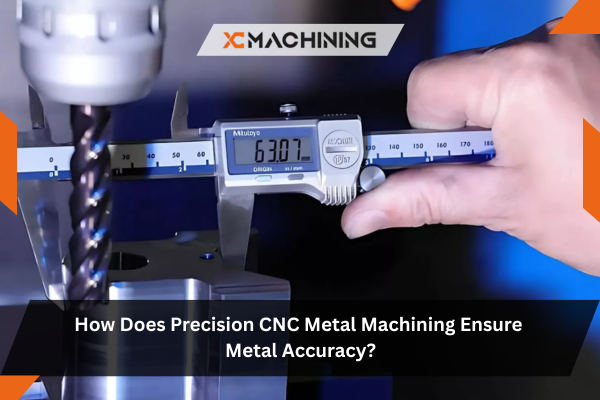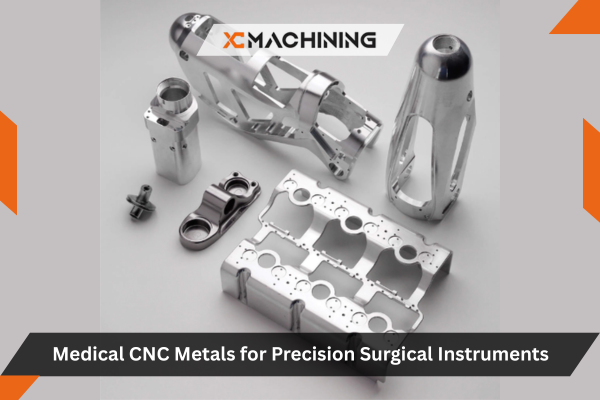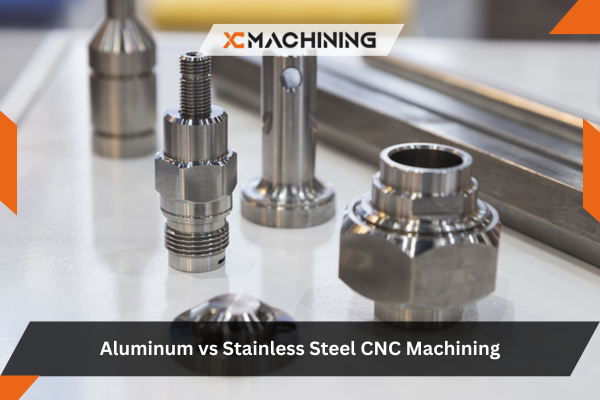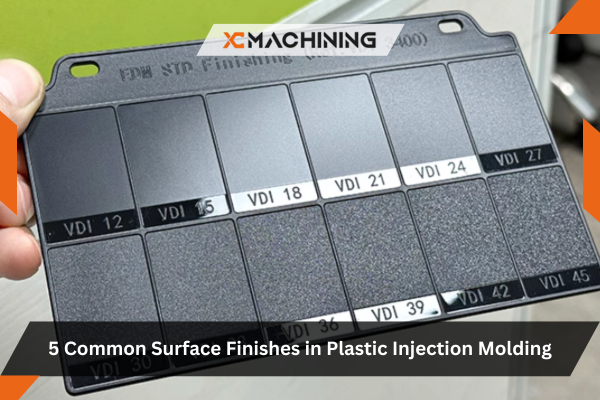Have you ever looked at a metal part and wondered how it could be so perfectly shaped, with every angle and dimension just right? Maybe you’ve tried old-school cutting or drilling and ended up frustrated by uneven edges or small imperfections that throw everything off. If so, you’ve likely asked: How does precision CNC metal machining make these exact tolerances possible?
In this blog, we’ll dive into each detail that helps you get accurate metal parts time after time. From software tools that guide the cutting process to the kind of machines used to how everything is set up, we’ll explore why these methods deliver such reliable outcomes.
Precision CNC Metal Machining: The Key To Consistent Results
Precision CNC metal machining is all about the automated shaping of metals through computer instructions. By translating digital designs into physical parts it avoids the inconsistencies of manual processes. Each layer of metal removed follows a careful plan, ensuring the final dimensions meet the tightest requirements. The machine’s accuracy comes from servo motors, software commands, and stable work setups.
Digital Accuracy Counts
The entire CNC Metal Machining process starts with CAD files that capture exact shapes and sizes. Tools then move along X, Y, and Z axes to remove or drill where needed, guided by numeric commands. Every movement is calibrated to fractions of a millimeter, so you end up with near-perfect geometry.
Automated Calibration
These machines have built-in sensors and feedback loops. They track movement, tool load, and positions, making tiny corrections if something drifts. That means consistent cuts, even if you’re running multiple parts in a single batch.
Minimizing Human Error
Without the operator manually guiding a tool, there’s far less chance of slip-ups. Once you enter the correct program and clamp everything properly, the system runs through the steps exactly the same way each time, delivering uniform results.
The Role Of CAD And CAM
Computer-Aided Design (CAD) and Computer-Aided Manufacturing (CAM) programs transform an idea into a machine-ready blueprint. In CAD, you design the object. In CAM, you plan each tool path and define how fast the cutter moves, how deep it plunges, and the sequence of operations.

Most CAD software lets you set tolerances so the final part meets your dimension targets. Meanwhile, CAM picks which cutters to use, how many passes are needed, and whether you should include finishing passes. This synergy ensures your precision CNC metal machining workflow remains smooth, from concept to the finished piece.
Machines With Stable Frames And Servos
A CNC machine’s backbone is its rigid structure. Heavy-duty frames and linear guides keep vibrations minimal, ensuring stable cuts. Internal servo motors move the spindle or table precisely, sticking to the coordinates the computer specifies.
Spindle Speed
The spindle’s RPM must match the material properties. Too fast, and the cutter might overheat; too slow, and you could end up with poor finishes or wasted time. Machines built for precision CNC metal machining typically have variable speed spindles to adapt to different metals.
Axis Control
Controllers interpret G-code and activate motors accordingly. Each axis (X, Y, Z) can shift in tiny increments, letting the cutter follow intricate paths. The motors measure rotation in steps, each step corresponding to a fraction of a millimeter, guaranteeing accurate movement.
Rigid Toolholding And Workholding
To achieve accuracy in CNC Metal Machining, the cutting tool and the workpiece must stay firmly in place. Loose or wobbly setups lead to sloppy edges or uneven surfaces. That’s why specialized tool holders and vises are crucial. A well-fastened end mill or drill bit reduces runout—meaning the tooltip rotates right in the center instead of wobbling.
Similarly, clamping the metal block or part firmly ensures it won’t shift mid-cut. Some shops use vacuum tables or fixtures custom-made for each part geometry. Others rely on standard vises, T-slot tables, or chucks. Regardless, the objective is to eliminate any movement that could throw off measurements.
Eliminating Heat Distortion
Heat can cause metal to expand or warp, messing up your tolerances. In precision CNC metal machining, controlling temperature is key. Coolant systems or cutting fluids often run continuously, removing heat from the cutting zone. This approach helps keep dimensions stable and prolongs tool life.
Coolant Flow
Spraying coolant at the tool/workpiece interface clears chips and absorbs heat. Operators can adjust coolant flow rates or angles, ensuring the fluid hits the hottest zone directly. This reduces friction and keeps part surfaces from distorting.
Machine Enclosures
Many CNC setups include enclosures to contain coolant spray and keep the environment consistent. That stable environment allows the metal to cool evenly, reducing stress on the part.
The Impact Of Tool Selection
Choosing the right tool geometry and material can make or break your accuracy goals. For instance, carbide end mills can handle higher speeds, remain sharp longer, and cut with minimal deflection. Meanwhile, high-speed steel might be cheaper but dulls faster under heavy loads.
Tool Deflection
When a cutter is too long or too slender, it can bend slightly during a cut. That bending causes misalignment, leading to bigger dimensional errors. Shorter, thicker tools typically yield better precision.
Coatings
Tool coatings like TiN (titanium nitride) or AlTiN (aluminum titanium nitride) reduce friction and heat buildup. By improving surface hardness, they help maintain a consistent cutting edge, promoting stable dimensions throughout the long run.
Multiple Axes And Their Advantages
A 3-axis machine moves in X, Y, and Z directions. But sometimes, you need more angles or complex surfaces. That’s where machines with 4 or 5 axes come in. They can rotate the part or the spindle, accessing hidden angles without multiple re-fixtures.
4-Axis Machining
A rotary axis typically rotates the part, letting you cut around cylindrical objects or add features on multiple sides in one setup. This approach avoids removing and re-clamping the piece, improving accuracy because you aren’t introducing alignment errors between steps. CNC Metal Machining enhances this process by ensuring precision and efficiency in complex cutting operations.
5-Axis Machining
With 5-axis setups, you can tilt and rotate the tool or table, producing undercuts or angled pockets in one pass. This reduces the need for jigs or multiple fixtures, cutting down on the chances of mismatch between different operations.
Sensors And Real-Time Monitoring
Modern CNC systems often incorporate sensors that watch for tool wear, load spikes, or unexpected vibrations. If the system detects an anomaly—like a jam or an overly high cutting force—it can pause or adjust parameters automatically.
Probing Systems
Built-in probes measure part locations or heights in CNC Metal Machining. The machine can then correct for minor offsets or inconsistencies in raw material positioning. This ensures each piece hits the same reference zero, preserving dimension consistency across a batch.
Force And Vibration Analysis
Some advanced setups track spindle torque or vibration signatures. By comparing them to normal ranges, the control can tweak feed rates or alert the operator to potential issues. This approach keeps cutting conditions optimal and stable.
Finishing Passes
During precision CNC metal machining, roughing passes remove bulk material quickly. Later finishing passes operate with reduced feeds, smaller step-downs, or specialized cutters to refine surfaces. This multi-step approach ensures the final shape meets tight tolerances and has a smooth finish.
Roughing Approaches
High-speed or adaptive roughing can rapidly carve away metal. The machine may push feed rates to remove large chunks efficiently. While not super accurate, it sets the stage for the finishing pass to shine.
Finishing Strategies
A finishing tool pass is all about fine detail. Slow feed rates, shallow cuts, and minimal material removal help keep dimensional drift minimal. This step typically forms the final surface, achieving the desired look and dimensional accuracy.
Quick Tip: Measure your part after roughing. If you left too little or too much stock to finish, adjust your CAM plan. That ensures consistent final pass performance.
Measuring And Inspection
To confirm the part truly meets its tolerances, shops rely on measuring tools ranging from basic calipers to sophisticated coordinate measuring machines (CMMs). Many integrate this inspection right on the CNC Metal Machining process using probes or scanning heads.
In-Process Gauging
Some setups measure features mid-process. If something’s off, the machine can re-cut or shift tool offsets. This dynamic correction maintains your tolerance band without waiting until the job finishes.
Post-Process Inspection
After the part leaves the CNC, it may go to a CMM for 3D measurements. The machine checks every dimension against the CAD model or blueprint. If it passes, you know the entire run likely remains consistent, thanks to automated processes.
Info: Laser scanning systems can quickly capture an entire surface geometry, highlighting any deviation from the CAD model in a color map format.
Avoiding Thermal Expansion
Even with coolant, large metal blocks can heat up over time. As metal warms, it expands. In CNC Metal Machining, if your environment swings in temperature or the cycle is lengthy, that expansion can cause subtle dimensional drift. Some shops use climate-controlled rooms to keep everything stable.
Gradual Warm-Up
Operators often warm up the spindle and let the machine run a short program on scrap or an empty pass. This practice equalizes any thermal expansions before tackling crucial parts. The result is a more stable performance from start to finish.
Checking Part Temperature
In very tight tolerance scenarios, measuring part temperature during or after machining helps ensure it’s near a consistent baseline. If the metal is still warm, allow it to cool before the final inspection.
Success Tip: If you must hold ultra-tight tolerances, keep your workshop at a stable temperature year-round. Large temperature swings can complicate even the best processes.
Skilled Operators And Programming
Even though CNC is automated, skilled human input remains essential. Operators set up the job, confirm tooling, load programs, and watch for anomalies. Programmers fine-tune toolpaths and strategies to ensure everything flows smoothly.
Setup Mastery
A well-trained operator can fixture parts accurately, pick the right offsets, and confirm the first article’s dimensions are correct. If something feels off, they’ll spot it quickly, preventing a run of defective parts.
Problem-Solving
Sometimes, unexpected vibrations or material inconsistencies appear. Skilled technicians diagnose these problems, adjusting speeds or changing tools mid-run if necessary. That agility keeps production on track and accuracy unimpaired.
Fact: Many shops cross-train operators in both manual and CNC skills. This approach builds confidence in troubleshooting and fosters a deeper understanding of metal cutting fundamentals.
CAD/CAM Data Management
Shops that run multiple jobs daily store libraries of proven toolpaths and setups. This knowledge base ensures they can replicate a successful job quickly, guaranteeing consistent results. By using version control or networked databases, they reduce the chance of loading an outdated program that might not reflect the latest improvements in Machining.

Revising Programs
If a customer modifies design specs or a part fails an inspection, quick program revisions can fix issues. Keeping track of each revision ensures you can revert if something doesn’t work or confirm exactly which version produced a certain batch.
Sharing Across Departments
Engineers, machinists, and quality control staff often collaborate. Clear digital records let them see the same data, minimizing miscommunications about angles, holes, or surface finishes.
Conclusion
How does precision CNC metal machining ensure metal accuracy? It’s a team effort of high-end machines, meticulous software instructions, steady fixturing, controlled temperatures, and ongoing measurement. Everything works together to minimize deviation from the desired design, even when removing significant amounts of metal or dealing with challenging shapes.
With the right approach—detailed CAD/CAM planning, robust setups, correct tooling, sensor feedback, and expert oversight—you can repeatedly produce metal parts that match tight tolerances. This dependable reliability makes precision CNC technology the go-to solution for industries that demand top-notch quality, from aerospace to medical devices. If you’ve ever marveled at an impeccably machined metal piece, now you know the secret behind its flawless geometry.
FAQs
What materials can be machined with precision CNC?
Almost any metal—aluminum, steel, titanium, or even exotic alloys—can be precision-machined if the correct tooling and settings are used.
How tight are the tolerances in precision CNC metal machining?
Depending on equipment and process, tolerances can go as low as a few microns, which is excellent for critical applications.
Is CNC better than manual machining for accuracy?
Yes. CNC automation removes human error from cutting paths, ensuring consistent results across multiple parts. Manual machining requires extreme skill and can still vary from part to part.





